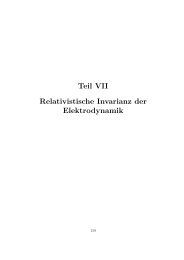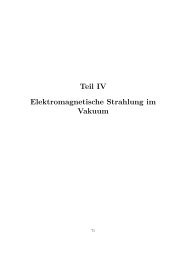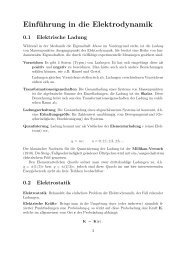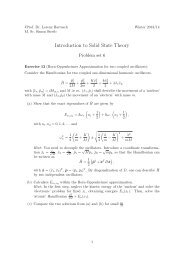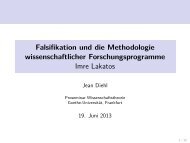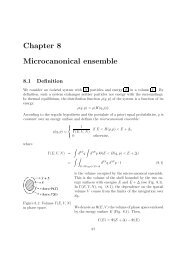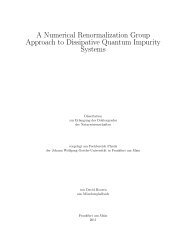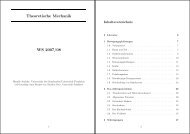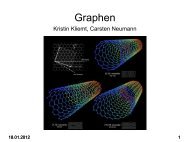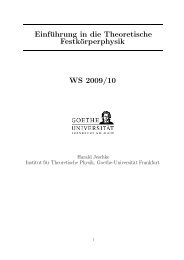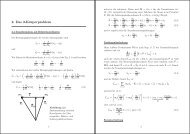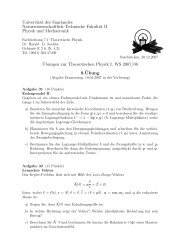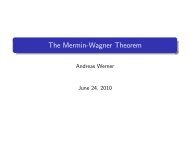Microscopic Modelling of Correlated Low-dimensional Systems
Microscopic Modelling of Correlated Low-dimensional Systems
Microscopic Modelling of Correlated Low-dimensional Systems
You also want an ePaper? Increase the reach of your titles
YUMPU automatically turns print PDFs into web optimized ePapers that Google loves.
Chapter 1: Introduction 3<br />
terials. An understanding <strong>of</strong> these properties allow us to design and model novel systems<br />
with desired properties. First principles simulations give a unique connection between mi-<br />
croscopic and macroscopic properties which, when combined with experimental tools, can<br />
deliver insight and deeper understanding <strong>of</strong> the relation between the atomic arrangement<br />
and the observed phenomena.<br />
To perform controlled ab initio calculations on reliable structures, we elaborate on a novel<br />
two-step approach, which combines classical with quantum-mechanical methods, to syste-<br />
matically prepare model structures for metal-organic or polymeric coordination compound<br />
systems and relax them to their equilibrium configuration. This procedure allows not only<br />
to study the ground state properties <strong>of</strong> compounds but also to modify their constituents.<br />
We show that this procedure is very effective, having the advantage <strong>of</strong> including quantum<br />
effects while diminishing the computational effort and increasing the accuracy. Neglecting<br />
these quantum effects can suppress interesting properties and can give rise to wrong conclu-<br />
sions. Our theoretical procedure has been successfully applied to different kind <strong>of</strong> complex<br />
metal-organic materials in this work.<br />
Within the class <strong>of</strong> metal-organic compounds, we are particularly interested in<br />
hydroquinone-derived linkers connecting Cu 2+ ions. The advantage <strong>of</strong> using hydroquinone<br />
linkers, is that they can be chemically modified in a way that influences the coordination<br />
geometry <strong>of</strong> the Cu 2+ ions while keeping the magnetic exchange at a moderate strength. We<br />
studied the influence <strong>of</strong> organic linkers in the magnetic correlation between the metal cen-<br />
ters in two representatives <strong>of</strong> a family <strong>of</strong> hydroquinone-based low-<strong>dimensional</strong> quantum-spin<br />
systems, namely Cu 2+ -2,5-bis(pyrazol-1-yl)-1,4-dihydroxybenzene (CuCCP) which behaves<br />
as 1D spin chain system and a coupled-dimer system TK91. Additionally we have intro-<br />
duced theoretically, systematic changes to the CuCCP polymer in order to achieve desirable<br />
electronic and magnetic properties in the modified new structures. This study allows for a<br />
gradual understanding <strong>of</strong> the properties <strong>of</strong> these systems and provides a guide to systematic<br />
synthesis in the laboratory.<br />
We have also extended our study to investigate microscopically not only the influence <strong>of</strong> the<br />
components and the <strong>dimensional</strong>ity but also the effects <strong>of</strong> the geometrical arrangement and<br />
the interplay between different energy scales in the magnetic phenomena observed in zero-,<br />
one- and two-<strong>dimensional</strong> materials. For this purpose, we considered three different systems<br />
containing 3d transition metal ions which have a small magnetic interaction parameter<br />
between the magnetic centers, presenting very interesting properties when one apply an



